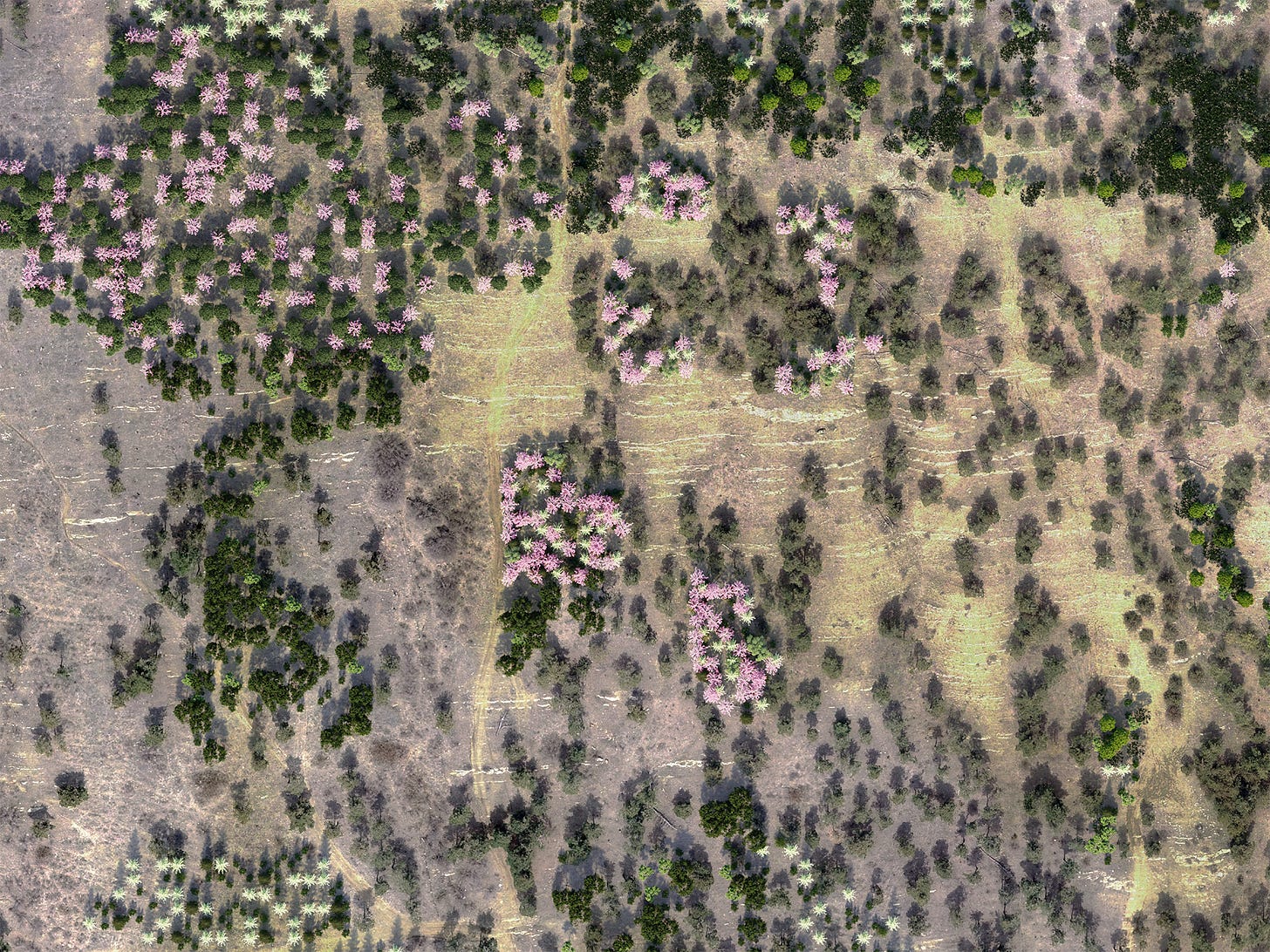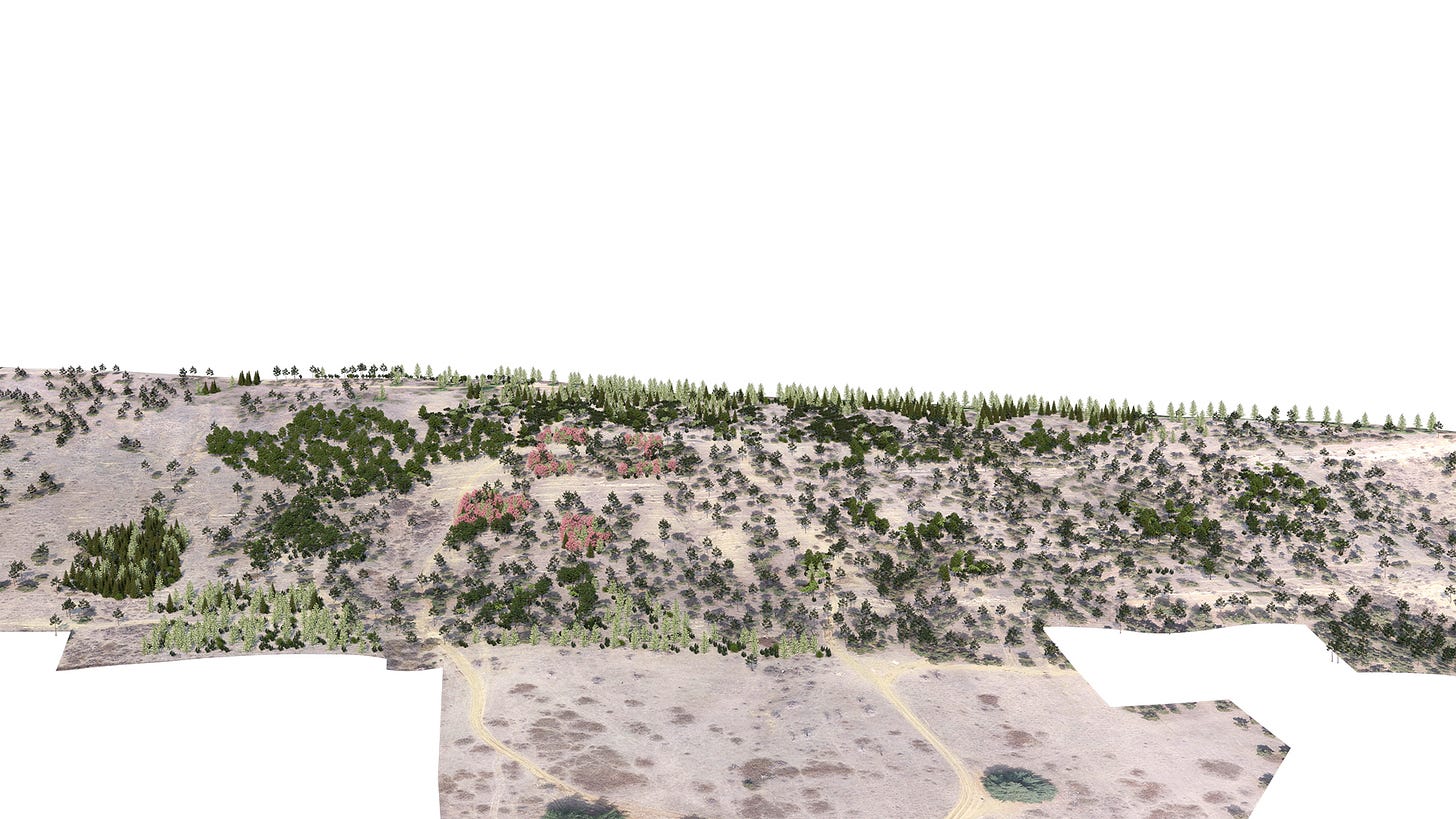Visualising Mtatsminda Forest
How simple models of ecological diversity can drive culturally relevant reforestation efforts

The desire to plant and protect urban forests is driven as much by cultural value as it is by ecological value. In the Matsminda project, we developed a digital workflow to incorporate ecological and aesthetic principles into our proposed planting plans.

The process began with data collection and interpretation by geologists and wildlife biologists. These specialists collected traditional spatial data and provided a qualitative analysis of habitat and recent trends in environmental change. We then compared this data against our own field observations of plant communities on territories with similar environmental qualities.
We distilled this qualitative analysis into typical forest conditions and used the geospatial data to identify “plantable areas” where the forest is most likely to succeed. We then matched typical forest conditions to these plantable areas, which became the centers of the new forest under principles of applied nucleation.

A rules-based approach to planting and simulation allows us to rapidly generate and evaluate planting plans through ecological and aesthetic parameters. The rules of the planting plan reflect the behaviors and preferences of plants and plant communities as well as the preexisting geological conditions on the territory. Rather than “painting” the ridge with clumps of species to achieve a picturesque image, we generated and manipulated the actual composition of the proposed patches to achieve ecological and aesthetic diversity.


This combination of workflows allows us to evaluate the outcomes of the rules-driven planting plan from an aesthetic perspective. Once a desired “mosaic” is achieved across the ridge, we reverse-engineer the simulation to produce a planting plan that can be easily executed by planting teams in the field. Thus, the “code” of the forest is imbued with an ecological, aesthetic, and logistical intelligence that can be adapted and amplified through future interventions.





